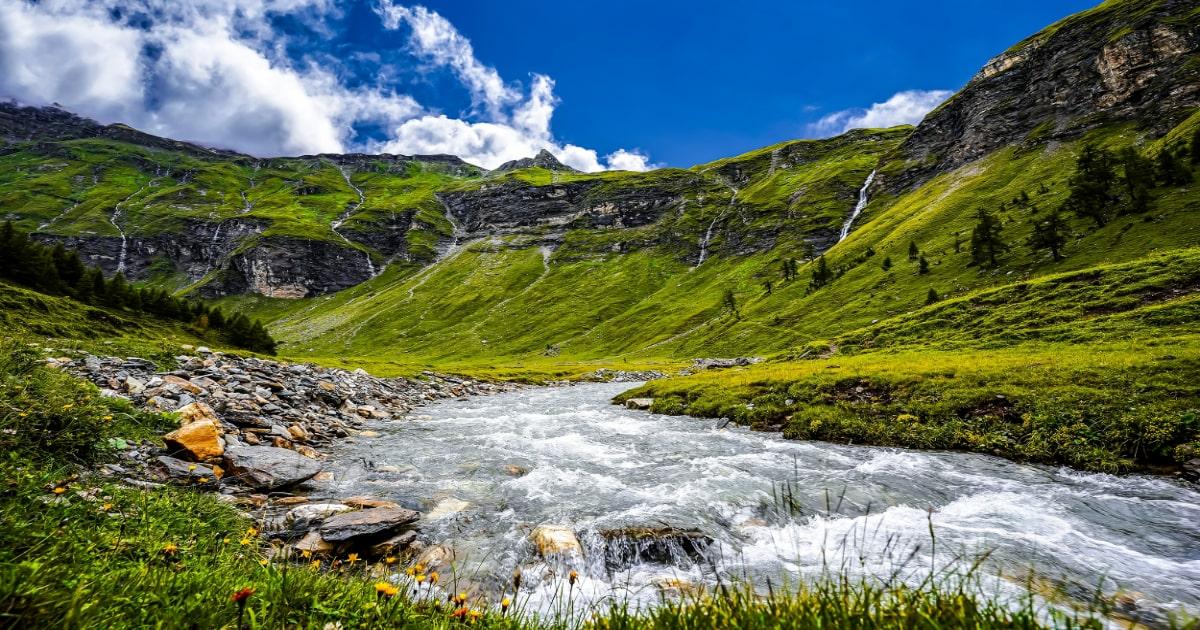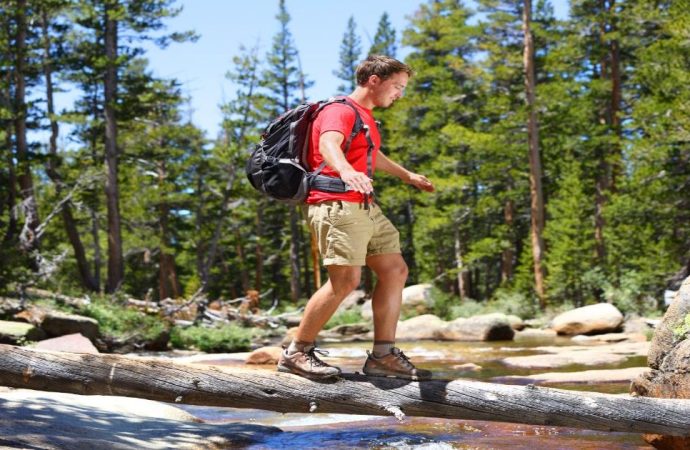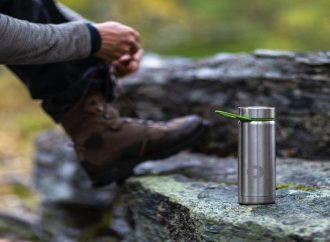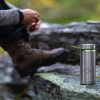If you decide to, or if you’re forced to, bug out to a wild location in the UK, you may have to stay on the move to avoid potential threats. Sooner or later, you’ll likely have to cross rivers and streams that may end up being very dangerous. You might not think that shallow streams
If you decide to, or if you’re forced to, bug out to a wild location in the UK, you may have to stay on the move to avoid potential threats. Sooner or later, you’ll likely have to cross rivers and streams that may end up being very dangerous.
You might not think that shallow streams are particularly dangerous, but with fast-flowing water and rocky bottoms, it can be very easy to slip and fall on the jagged rocks, or get swept downstream.
Not only that, but some UK rivers and streams can be deceptively deep in places, and some will feature deep mud, sinking sand and waterfalls.
Think about it for a moment: as a prepper who is bugging out, you’ll probably have all your heavy gear on your back – and then learning how to cross rivers in your path becomes another obstacle that you’ll have to factor into your survival.
It is not uncommon for people to die when crossing streams and rivers around the world, whether from drowning, head injuries, or even from hypothermia even after maknig it across.
In this article, we’ll discuss the ways that you can safely cross streams and increase your chances of survival.
How To Cross Fast-Flowing Streams
Our first discussion point is about streams that have particularly fast flowing water. Mountaineering Scotland stresses that fast flowing water can be surprisingly powerful and hard to cross, regardless of depth.
The power of the fast-flowing water means you’re more likely to be pushed over. To protect yourself against this outcome, get yourself a walking pole if you know you’ll likely to encounter a stream, or pick up a strong and dry wooden stick that you can use for extra stability.

Either jam the pole into spaces between rocks for a secure hold, or push it down into the sand or silt, then edge your way slowly across the water. Make sure you face up stream and moved sideways like a crab – this can help with your stability.
If you’re not alone, group stream crossings are always safer. Form a line by holding onto each other’s waists and sidestep across the stream in this manner. The strongest person should always be at the front of the line.
Our last tip is about loose items of clothing and other objects. A top tip is to buy a dry bag to stash everything inside, ensuring that everything is bone dry when you make it to the other side. You can even use your dry bag as a flotation device across calmer waters.
Make sure everything is secure, or it could get washed away by the fast water. Even baggy clothing can fill up with water and make your movement more difficult. You can wear high wellington boots if you have them, put on waterproof trousers or use gaiters.
How To Cross Rivers When They Are Deep
One thing to remember about deep water is that if the water level is above your knee, it’s generally considered unsafe due to the speed of the flow and your stability. You’d be better walking upstream until you find a shallower location, or try to identify a bridge on your map of the area. In the case of survival, though, you might not have the option to do this.
If you do find that crossing a deep stream or river is crucial to your survival, first of all you should stop and try to see if there are any shallower pools than you can use to aid your crossing.
You can do this by looking for differences in water colour as darker areas will be deeper. Also check for visible debris like logs and boulders – sometimes they can be a good spot to secure yourself while you take a break, but they can also negatively affect your pathfinding.
After that, you need to try to work out if you’ll be wading in waist or chest high water, or if you’ll actually be swimming. Use a walking pole or stick to test the depth of water from the bank – if you can wade, continue using the pole to check for uneven patches or obstacles in your path.
If you have to swim, have a waterproof dry bag that you can use to keep your clothes and valuables dry or just wrap it with duct tape. Choose an area to swim across that has the weakest current – you can do this by looking at where the water either swirls or foams on the surface.
Top Tips For Crossing Rivers

Here are some of the general things you should keep in mind when thinking how to cross rivers and streams on your trail path.
Beware of the cold – Crossing streams is only part of the problem: you also have to be wary about the water temperature. Take the necessary precautions to avoid catching a chill, such as keeping clothes dry and lighting a fire or seeking shelter after getting wet.
Roll up your trousers – If you’re wearing long trousers, they could get caught by the current and affect your balance. You can also save your trousers getting wet by doing this. If you already have waterproof boots and the water is not deep, you can just put on your gaiters.
Shoes – If the stream bed is flat and sandy, it can actually be a good idea to remove your shoes or boots to keep them dry for afterwards. This is not recommended for slippery or jagged rocks, however, as your waterproof shoes will offer valuable protection for your feet.
Don’t look down – If the water is too deep or murky, there’s not much point in looking down because you won’t be able to see potential obstacles anyway. The American Hiking Society recommends looking up and focusing on your destination as you cross streams, as looking down as moving water may be disorientating.
Waiting – If the stream you want to cross is overflowing with water because of heavy rain or storms, the best advice is to camp out somewhere nearby – not on the riverbank – and simply wait for the water level to drop. It’s the safest thing to do if you know the river is more swollen than normal.
Change your route – Is it vital that you cross the stream at a certain point? It could be better to examine your local area map closely or walk up and down the stream until you find a safer place to cross. There may even be bridges available in some places.
Make a path – If there are lots of rocks or small logs readily available, you could use them to make a pathway across the water. Place the rocks or logs in a line for as far as you can to make your crossing more stable.
Summary
Learning how to cross rivers safely is a vital skill for any prepper who bugs out. Keep these tips in mind if you ever have to cross any streams in the future.
If you are crossing with animals too remember to keep a lead or harness on them to prevent them from being swept away. If you have a horse then you can make multiple trips back and forth to carry all of your group over as well as your equipment.





















